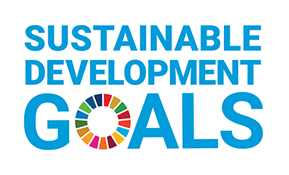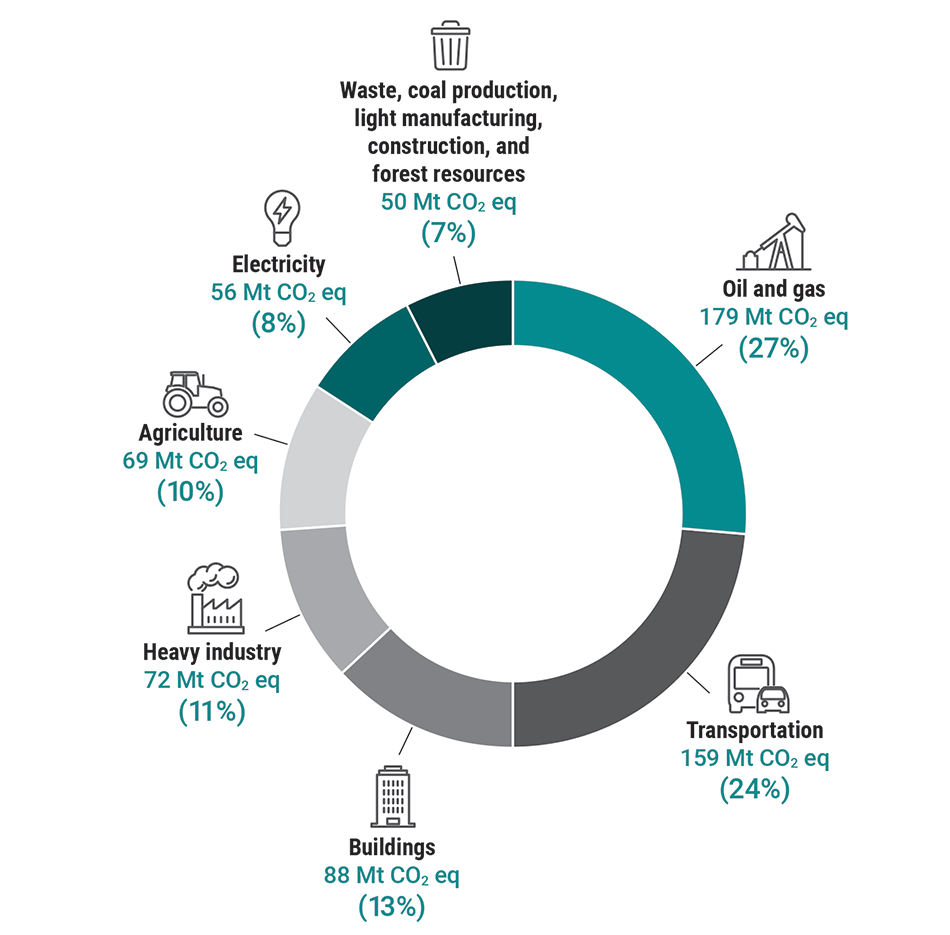2023 Reports 1 to 5 of the Commissioner of the Environment and Sustainable Development to the Parliament of Canada
Report 5—Emission Reductions Through Greenhouse Gas Regulations—Environment and Climate Change Canada
At a Glance
Overall, we found that Environment and Climate Change Canada did not know the extent to which the greenhouse gas regulations we examined contributed to Canada’s overall emission reductions. This was because the department’s approach to measuring emissions did not attribute emission results to specific regulations. As well, we found that the department was too slow to develop the Clean Fuel Regulations, jeopardizing the pace of Canada’s emission reductions.
When we looked at the performance of individual regulations, we found mixed results. The regulations we looked at that aimed to reduce emissions from power generation achieved their targets, but some of the regulations that aimed to reduce emissions from vehicles did not. Although greenhouse gas emissions from passenger cars decreased, they increased by more for light trucks and heavy-duty vehicles, such as school and transit buses and freight, delivery, garbage, and dump trucks. However, the regulations have yet to reach their full stringency.
In addition, Environment and Climate Change Canada could not be certain whether regulations to limit methane emissions helped Canada reach its targets. This is worrying because methane has 25 times the warming potential of carbon dioxide over a 100‑year period. We found large sources of methane emissions were unaccounted for in inventories and not covered by any existing regulations. This increases the uncertainty about the quantity and significance of the reductions being achieved.
Without comprehensive impact information, the federal government does not know whether it is using the right tools to reduce emissions.
Why we did this audit
- The release of greenhouse gases and their increasing concentration in the atmosphere are negatively affecting environments, human health, and economies around the world.
- Assessing the results of policy measures, including regulations, is a key step toward developing effective greenhouse gas reduction strategies, reducing emissions, and ultimately meeting targets.
- Reducing methane emissions as quickly as possible is critical to limiting the rise of global temperatures in the near term.
Key findings
- Environment and Climate Change Canada did not measure or report on the contributions of the greenhouse gas regulations we examined toward Canada’s 2030 target for emission reduction.
- The department missed its initial target dates for developing the Clean Fuel Regulations by 2 years, which is out of sync with the urgent nature of the climate crisis.
- The power generation regulations we examined were on track to achieve their emission reduction targets, but the transportation regulations were not.
- It is unclear whether Canada will meet its target for methane emission reductions.
Key facts and figures
- In 2020, Canada’s total greenhouse gas emissions were equivalent to 672 megatonnes of carbon dioxide. A megatonne of carbon dioxide equivalent (Mt CO2 eq) is the amount of a greenhouse gas that has the same warming potential as a million tonnes (a megatonne) of carbon dioxide over a specified period. The oil and gas and the transportation sectors were the largest sources of emissions, at 27% and 24%, respectively.
- Canada’s 2030 Emissions Reduction Plan includes funding of more than $9 billion to help Canada reduce its greenhouse gas emissions by 40% to 45% below 2005 levels by 2030.
- In October 2021, Environment and Climate Change Canada announced a commitment to reduce oil and gas methane emissions by at least 75% below 2012 levels by 2030. Methane has at least 25 times the warming potential of carbon dioxide over a 100‑year period.
Highlights of our recommendations
- Environment and Climate Change Canada should improve the sensitivity analyses in its modelling by including additional variables. This will enable the department to more accurately assess the risk that future regulations may not meet their greenhouse gas emission reduction goals and to be better prepared to respond.
- To accurately assess the effectiveness of the provinces’ methane regulations, Environment and Climate Change Canada should collect all relevant information from provinces, including compliance data.
- Environment and Climate Change Canada should complete the methodology update in the National Inventory Report by including all sources of methane emissions in its model. It should also allow the use of the most recent measurement‑based data to improve the accuracy of its estimates of methane emissions from the oil and gas sector.
Please see the full report to read our complete findings, analysis, recommendations and the audited organizations’ responses.


The audit team examined actions in support of the United Nations’ Sustainable Development Goals to understand the department’s contributions to Goal 13 (Climate Action).
This audit is important because the release of greenhouse gases and their increasing concentration in the atmosphere are negatively affecting environments, human health, and economies around the world, yet Canada has repeatedly missed its targets to reduce its greenhouse gas emissions. Even though not all of the selected regulations are fully implemented yet—and recognizing that their stringency is meant to increase over time—it is important to measure the regulations’ performance at an early stage to assess whether they are on track to reduce emissions as intended.
Visit our Sustainable Development page to learn more about sustainable development and the Office of the Auditor General of CanadaOAG.
Exhibit highlights
Canada’s total greenhouse gas emissions (in megatonnes of carbon dioxide equivalent, Mt CO2 eq, rounded) by sector (2020)

Source: National Inventory Report 1990–2020: Greenhouse Gas Sources and Sinks in Canada, Environment and Climate Change Canada, 2022
Text version
This pie chart shows the amount of Canada’s total greenhouse gas emissions by sector in 2020. The highest emissions came from the oil and gas sector and the transportation sector, together making up about half of the emissions, while the lowest emissions came from the waste, coal production, light manufacturing, construction, and forest resources sectors.
The rounded sector amounts in megatonnes of carbon dioxide equivalent are as follows:
- The oil and gas sector emitted 179 megatonnes of carbon dioxide equivalent, or 27%, of Canada’s total greenhouse gas emissions in 2020.
- The transportation sector emitted 159 megatonnes of carbon dioxide equivalent, or 24%, of Canada’s total greenhouse gas emissions in 2020.
- The buildings sector emitted 88 megatonnes of carbon dioxide equivalent, or 13%, of Canada’s total greenhouse gas emissions in 2020.
- The heavy industry sector emitted 72 megatonnes of carbon dioxide equivalent, or 11%, of Canada’s total greenhouse gas emissions in 2020.
- The agriculture sector emitted 69 megatonnes of carbon dioxide equivalent, or 10%, of Canada’s total greenhouse gas emissions in 2020.
- The electricity sector emitted 56 megatonnes of carbon dioxide equivalent, or 8%, of Canada’s total greenhouse gas emissions in 2020.
- The waste, coal production, light manufacturing, construction, and forest resources sectors emitted a combined 50 megatonnes of carbon dioxide equivalent, or 7%, of Canada’s total greenhouse gas emissions in 2020.
Performance targets for 2017, 2018, and 2019 cars and light trucks were not achieved
| Model year | Performance targets for the Passenger Automobile and Light Truck Greenhouse Gas Emission Regulations | Performance results |
|---|---|---|
| 2017 | 21.1% | 17% |
| 2018 | 23.9% | 21% |
| 2019 | 26.7% | 23% |
Source: Adapted from information provided by Environment and Climate Change Canada
Emission reduction targets for heavy-duty vehicles grow more ambitious over time
| Model year | Combination tractors | Heavy-duty pickup trucks and vans | Vocational vehicles | Trailers |
|---|---|---|---|---|
| 2021 | 13% | 2% | 8% | 4% |
| 2024 | 17% | 10% | 14% | 6% |
| 2027 | 23% | 16% | 17% | 8% |
Source: Adapted from information provided by Environment and Climate Change Canada
Performance targets for 2018, 2019, and 2020 heavy-duty vehicles were achieved
Targets
| Model year | Combination tractors | Heavy-duty pickup trucks and vans | Vocational vehicles |
|---|---|---|---|
| 11% | 13% | 5% |
Achievements
| Model year | Combination tractors | Heavy-duty pickup trucks and vans | Vocational vehicles |
|---|---|---|---|
| 2018 | 19% | 12% | 9% |
| 2019 | 20% | 13% | 9% |
| 2020 | 19% | 15% | 9% |
Source: Adapted from information provided by Environment and Climate Change Canada
Related information
Tabling date
- 20 April 2023
Related audits
- 2023 Reports of the Commissioner of the Environment and Sustainable Development to the Parliament of Canada
Report 1—Forests and Climate Change - 2022 Reports of the Commissioner of the Environment and Sustainable Development to the Parliament of Canada
Report 1—Just Transition to a Low-Carbon Economy - 2022 Reports of the Commissioner of the Environment and Sustainable Development to the Parliament of Canada
Report 3—Hydrogen’s Potential to Reduce Greenhouse Gas Emissions - 2022 Reports of the Commissioner of the Environment and Sustainable Development to the Parliament of Canada
Report 5—Carbon Pricing—Environment and Climate Change Canada - 2021 Reports 3 to 7 of the Commissioner of the Environment and Sustainable Development to the Parliament of Canada
Report 4—Emissions Reduction Fund—Natural Resources Canada - 2017 Spring Reports of the Auditor General of Canada to the Parliament of Canada
Report 7—Fossil Fuel Subsidies - 2017 Fall Reports of the Commissioner of the Environment and Sustainable Development to the Parliament of Canada
Report 1—Progress on Reducing Greenhouse Gases—Environment and Climate Change Canada
Parliamentary hearings
